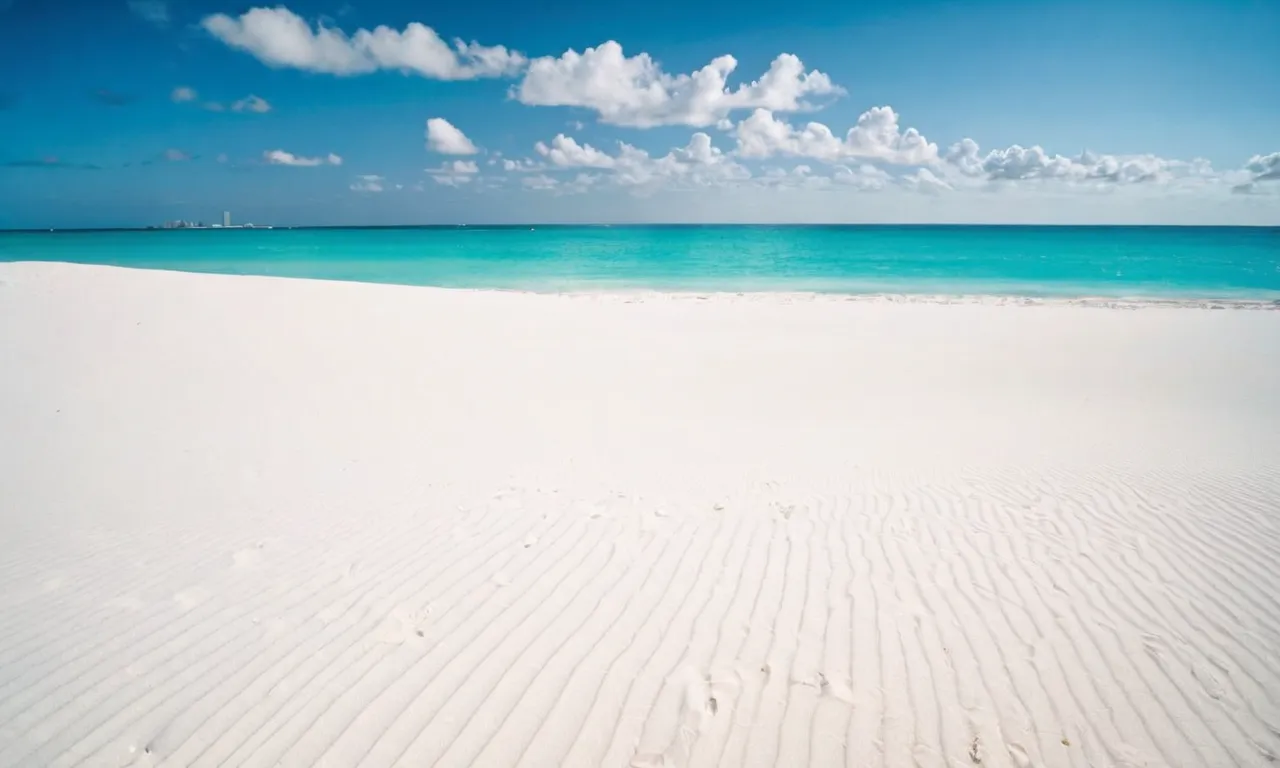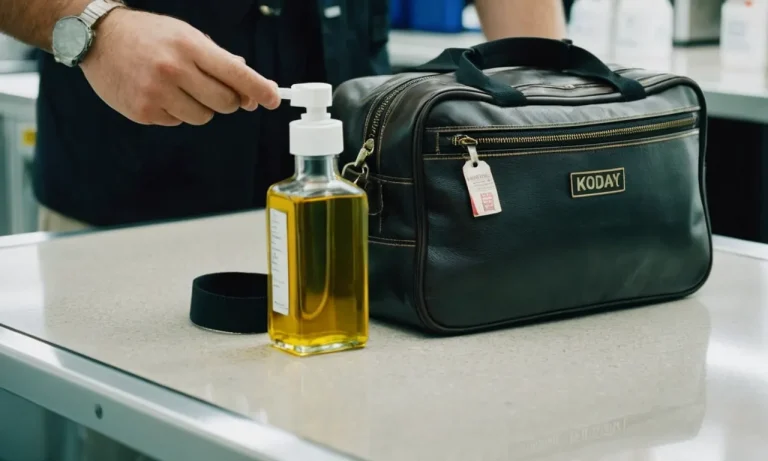Miami Beaches Without Seaweed In 2023
Miami is famous for its beautiful beaches, crystal clear waters, and lively atmosphere. However, nothing can ruin a relaxing day on the sand like masses of slimy seaweed washing up ashore.
If you’re short on time, here’s a quick answer to your question: Several Miami beaches such as South Beach, Sunny Isles Beach, and Key Biscayne tend to have less issues with seaweed due to their locations and shorelines.
Checking seaweed forecasts and planning beach trips just after high tides can also help avoid excessive seaweed.
In this comprehensive guide, we will discuss the causes of Miami’s seaweed problem, the best times to visit to avoid it, beaches that tend to stay seaweed-free more often, and tips to enjoy Miami’s shores seaweed-free.
What Causes the Seaweed in Miami Beaches
Miami, known for its stunning beaches, has been dealing with the issue of seaweed washing up on its shores in recent years. Understanding the causes of seaweed in Miami beaches can help us find effective solutions to keep the beaches clean and enjoyable for residents and tourists alike.
Sargassum Seaweed Bloom
One of the main causes of seaweed in Miami beaches is the Sargassum seaweed bloom. Sargassum is a type of brown seaweed that originates from the Sargasso Sea in the North Atlantic Ocean. Under normal conditions, this seaweed helps support a diverse ecosystem and provides a habitat for various marine species.
However, in recent years, there has been an increase in the amount of Sargassum seaweed washing up on Miami beaches.
The Sargassum seaweed bloom is believed to be influenced by several factors, including nutrient availability, ocean currents, and climate change. Increased nutrient runoff from agricultural activities and pollution can contribute to the growth of Sargassum seaweed.
Additionally, changes in ocean currents and wind patterns can transport the seaweed towards Miami’s shores.
Ocean Currents and Winds
Ocean currents and winds play a significant role in the distribution of seaweed along Miami’s beaches. The Gulf Stream, a powerful warm ocean current, flows from the Gulf of Mexico up the east coast of Florida.
This current can carry seaweed from the Caribbean and other regions into Miami’s coastal waters.
Furthermore, wind patterns can influence the movement of seaweed. Prevailing winds from the east can push the seaweed onto Miami’s beaches, while winds from the west can help clear the beaches of seaweed.
Understanding these patterns can assist in predicting when seaweed might be particularly abundant or when the beaches are likely to be seaweed-free.
Seasonal Growth Cycles
Seaweed growth also follows seasonal cycles, which can contribute to its presence on Miami beaches at certain times of the year. Factors such as water temperature, sunlight, and nutrient availability can influence the growth and reproduction of seaweed.
In Miami, the presence of seaweed tends to be more noticeable during the warmer months when water temperatures are higher and sunlight is abundant.
Efforts are being made to mitigate the impact of seaweed on Miami beaches. These include regular beach cleanups, the use of seaweed barriers, and research into innovative methods to remove seaweed from the water before it reaches the shore.
By understanding the causes of seaweed in Miami beaches, we can work towards creating solutions that will help keep the beaches pristine and seaweed-free, providing a wonderful experience for all beachgoers.
Best Times to Visit Miami Beaches to Avoid Seaweed
Miami beaches are known for their beautiful sandy shores and crystal-clear waters, but occasionally, seaweed can wash up on the shorelines, affecting the overall beach experience. However, by planning your trip strategically, you can increase your chances of enjoying seaweed-free beaches.
Here are some tips on the best times to visit Miami beaches to avoid seaweed:
Check Seaweed Forecasting Sites
Before heading to the beach, it can be helpful to check seaweed forecasting sites that provide real-time updates on seaweed conditions. These websites utilize data from various sources, including satellite imagery and oceanographic models, to predict the presence and intensity of seaweed in specific areas.
By staying informed, you can plan your beach visit on a day when the seaweed levels are expected to be low.
One such reputable seaweed forecasting site is Seaweed Forecast. They provide detailed information on seaweed conditions in different coastal regions, including Miami. Their forecasts can give you insights into the best times to visit Miami beaches for a seaweed-free experience.
Plan Trips Around High Tide
Another strategy to avoid seaweed at Miami beaches is to plan your trips around high tide. Seaweed tends to accumulate on the shorelines during low tide, as it gets pushed closer to the beach by the currents.
By visiting the beach during high tide, you can minimize the chances of encountering large amounts of seaweed.
It’s important to note that high tide times vary each day, so it’s advisable to check the local tide charts or use a reliable tide forecasting website to determine the best times to visit Miami beaches. This way, you can enjoy pristine, seaweed-free shores during your beach outing.
Visit in Non-Peak Seaweed Seasons
Seaweed abundance can also vary throughout the year, and certain seasons may experience higher seaweed levels than others. By visiting Miami beaches during non-peak seaweed seasons, you can increase the likelihood of finding beaches free from excessive seaweed.
Generally, the summer months from May to August tend to have higher seaweed presence due to warmer water temperatures and increased nutrients. On the other hand, the winter months from November to February typically experience lower seaweed levels.
However, it’s important to keep in mind that seaweed patterns can vary from year to year, so checking the latest updates from seaweed forecasting sites can provide valuable information.
By following these tips and planning your visit to Miami beaches accordingly, you can enjoy the breathtaking beauty of the beaches without the inconvenience of seaweed. So grab your sunscreen, pack your beach gear, and get ready to soak up the sun on Miami’s seaweed-free shores!
Miami Beaches That Tend to Have Less Seaweed
South Beach
South Beach is one of the most popular and iconic beaches in Miami, known for its crystal-clear turquoise waters and pristine sandy shores. Thankfully, it is also one of the beaches that tend to have less seaweed.
The beach’s location and favorable ocean currents contribute to its seaweed-free environment. Visitors can enjoy sunbathing, swimming, and various water activities without the hassle of navigating through seaweed-covered areas.
Sunny Isles Beach
Sunny Isles Beach is another great option for those looking to avoid seaweed during their beach visit. Located just north of Miami Beach, this picturesque beach offers a tranquil escape with its wide, sandy coastline and azure waters.
The beach is well-maintained, and local authorities take great care in keeping it seaweed-free. Visitors can relax under the sun, take a dip in the ocean, or indulge in water sports without any seaweed-related interruptions.
Key Biscayne
Key Biscayne is a hidden gem located just a short drive from downtown Miami. This charming island boasts beautiful beaches that are often spared from excessive seaweed. The island’s unique geographical position shields it from the seaweed influx that affects some of the other beaches in the area.
Visitors to Key Biscayne can enjoy the tranquility of the beaches, go for a bike ride along the scenic paths, or explore the nearby nature reserves.
It’s important to note that while these beaches tend to have less seaweed, it is always a good idea to check local beach conditions before heading out for a day of sun and fun. Websites like miamidade.gov/beaches provide up-to-date information on beach conditions, including seaweed levels, so that you can plan your beach day accordingly.
Tips for Enjoying Miami’s Beaches Seaweed-Free
Miami is known for its stunning beaches, but sometimes seaweed can be a nuisance. However, with a few simple tips, you can enjoy the beautiful Miami beaches without worrying about seaweed spoiling your fun. Here are some helpful suggestions:
Go Early in the Morning
One of the best ways to avoid seaweed on Miami’s beaches is to go early in the morning. Seaweed tends to wash up on the shore overnight, so by visiting the beach before the crowds arrive, you’ll have a better chance of finding a seaweed-free spot.
Plus, you can start your day with a peaceful walk along the shore and enjoy the stunning sunrise.
Wade Out Past the Seaweed Line
If you do encounter seaweed while at the beach, don’t let it discourage you. Instead, wade out past the seaweed line. Seaweed often accumulates near the shore, but as you move further into the water, you’ll find cleaner areas where you can swim and relax without the presence of seaweed.
Just be cautious of any strong currents and always prioritize your safety.
Consider a Beach With Lifeguards Who Rake
Did you know that some beaches in Miami have lifeguards who actively rake the seaweed? These lifeguards work tirelessly to ensure that the beaches remain seaweed-free for visitors. When planning your beach trip, consider choosing a beach that employs lifeguards who rake the seaweed regularly.
This can significantly enhance your beach experience and allow you to enjoy the crystal-clear waters without any seaweed distractions.
Conclusion
While seaweed can occasionally wash up even on Miami’s most pristine shores, being strategic with beach trip planning can greatly minimize the chances of excessive seaweed ruining your coastal vacation.
Avoiding peak seaweed seasons, checking forecasts, timing visits properly with the tides, and knowing which beaches tend to stay cleaner can all lead to idyllic days of seaweed-free fun under the Florida sun.








